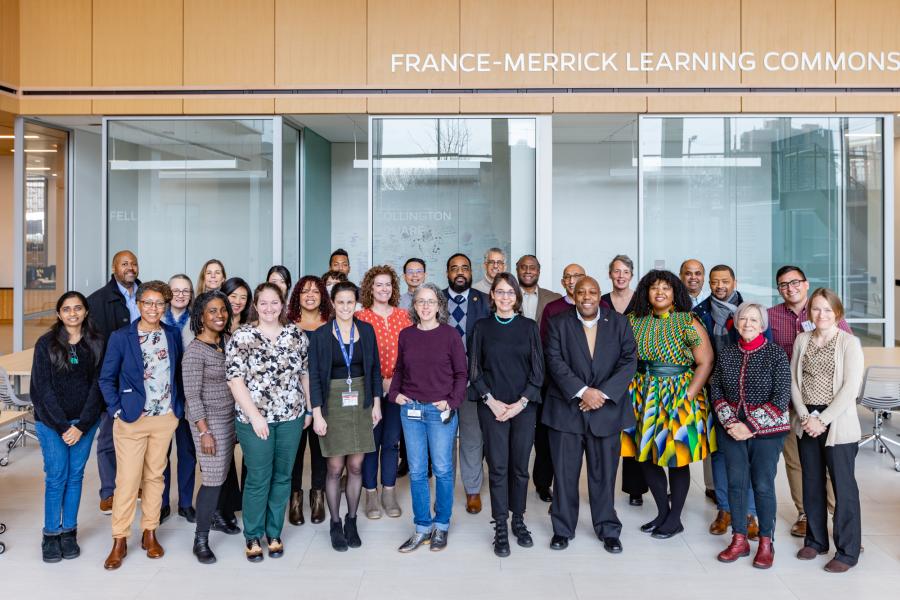Racial discrimination comes in different forms. While interpersonal discrimination is most recognizable, individuals interact across the course of their lives with structures and institutions that disadvantage or exclude some more than others.
The Structural Racism Convening, hosted last week by the Johns Hopkins School of Nursing, brought together 40 top scholars from the Johns Hopkins Structural Racial Discrimination and Resilience Collaborative, or SRDRC, Johns Hopkins AI-X Foundry, and the SNF Agora Institute to explore how data science, machine learning, and concepts from complex adaptive systems can help humans understand the various ways structural racism affects people and health outcomes.
Sarah Szanton, dean of the School of Nursing and Patricia M. Davidson Professor for Health Equity and Social Justice, has been working for decades with collaborator Roland J. Thorpe, Jr. of the Johns Hopkins Bloomberg School of Public Health on how to measure structural racism.
"We need a more refined understanding of exactly how this fabric of discriminatory practices, or racial discrimination, affects health outcomes," said Szanton. "We brought this group of about 40 people from about 25 different disciplines together because the field of racism and health is focused mainly on individual interactions, but there's much less about how it is structured in society and it's a very difficult problem to measure."
Attendees participated in small groups to collaborate on ways to utilize specific life-course data, such as education, neighborhood, employment, and health, to better understand structural racism. They then presented their findings to the larger group, including the insights below:
Gilbert Gee, professor and chair of the Department of Community Health Sciences in the Fielding School of Public Health at the University of California, Los Angeles, summarized his group's findings saying, "We focused a lot on this issue of problem definition: How do we think about what structural racism is and all of these different levels even before we get to the issue of measures? At the end of the day, what are we trying to measure and do with this research and what kind of outcomes we hope to achieve to leverage that?"
Odis Johnson Jr., Bloomberg Distinguished Professor at the Johns Hopkins School of Education and executive director of Johns Hopkins Center for Safe and Healthy Schools, was part of the small group focused on the topic of methodology of studying structural racism. When asked why he was interested in exploring this topic, he said, "It's an underdeveloped area that cuts across all of the fields, that I think has been ignored for quite a while. So, I'm happy to finally [be] talking about what it is, how to measure it, and trying to contribute in that way."
Paulette Clancy, head of the Department of Chemical and Biomolecular Engineering at the Whiting School of Engineering, said, "My group explored the deep interconnectedness of the various manifestations of structural racism [like inequities in housing, policing, education, and health care] and uncovered how little is known about their dependencies. As a machine learning practitioner, I think that this is a potentially fertile application area for AI, and one that I believe has not been studied much at all. It's a formidable task to attempt to tackle such a project, but the knowledge it could provide, and importance of this topic is a huge incentive."
Researchers from the Johns Hopkins Structural Racial Discrimination and Resilience Collaborative, Johns Hopkins AI-X Foundry, and the SNF Agora Institute presented on their respective fields of study and attendees participated in a question-and-answer session following the presentations.
The Structural Racism Convening provided participants with an opportunity to submit a proposal for the Advancing Measurement and Understanding of Structural Racism seed grants program with a proposed start date of May 2023. The workshop and seed grants are supported by the National Institute on Aging and the AI-X Foundry at Johns Hopkins.
Posted in Science+Technology
Tagged artificial intelligence, machine learning, data science, racism








